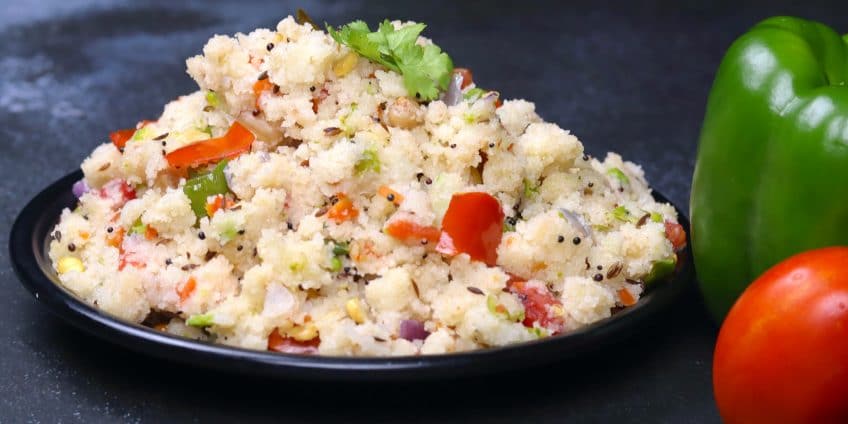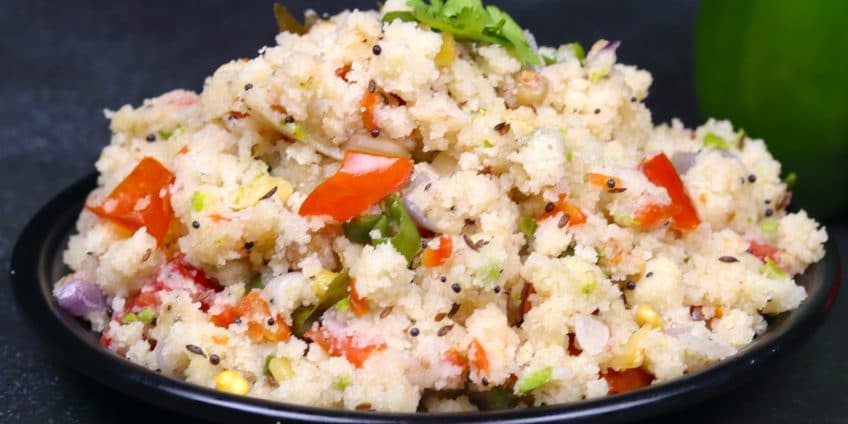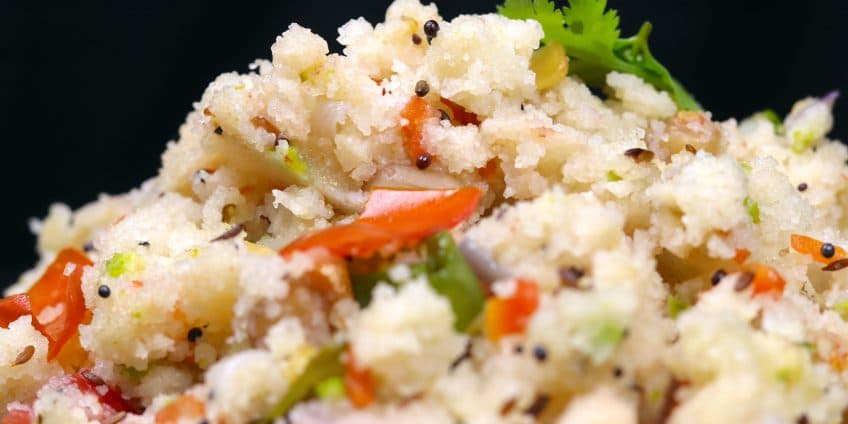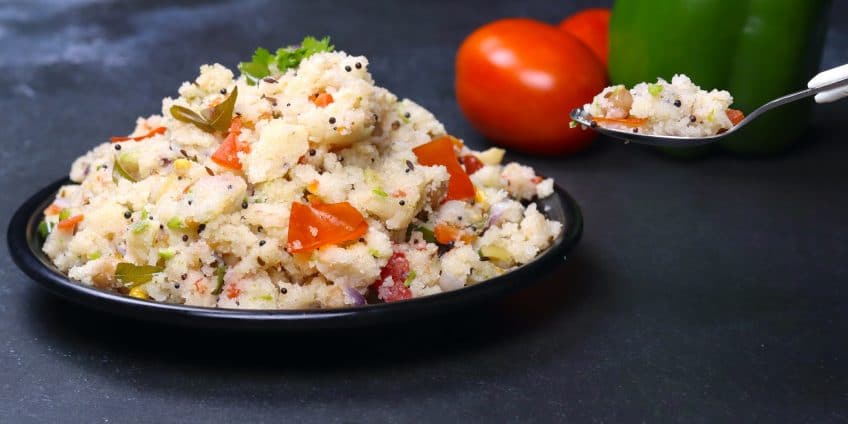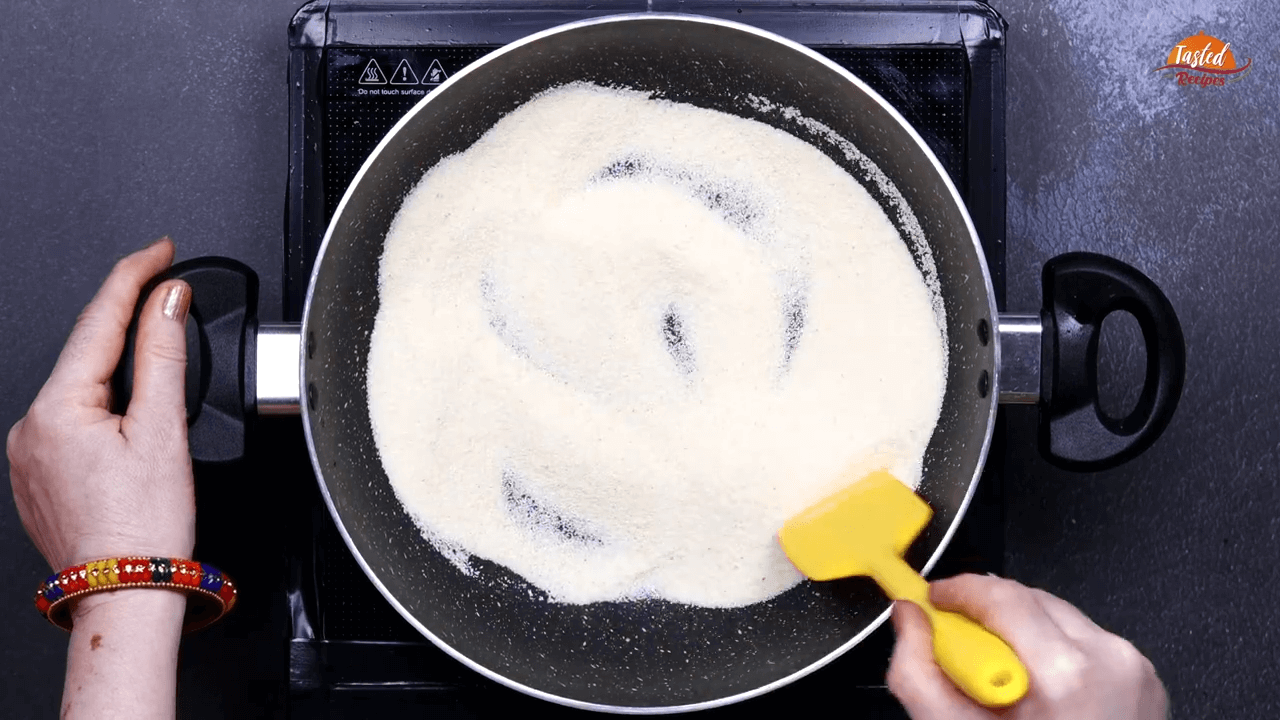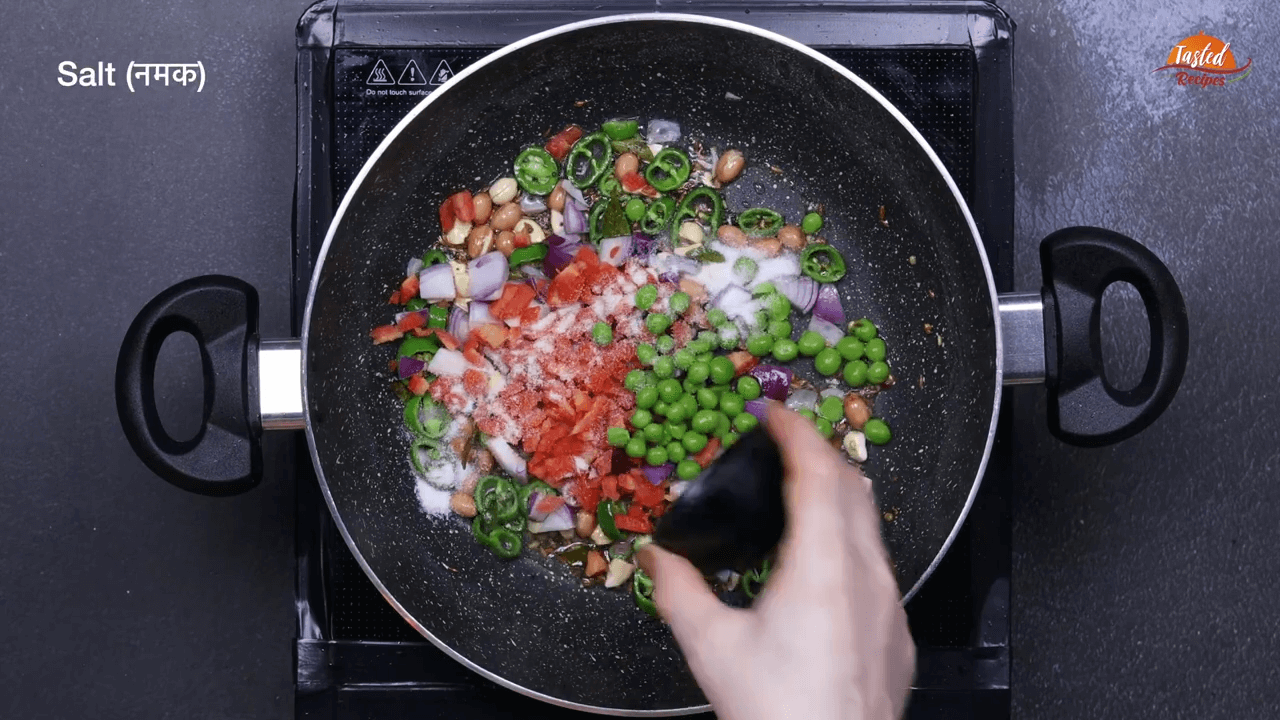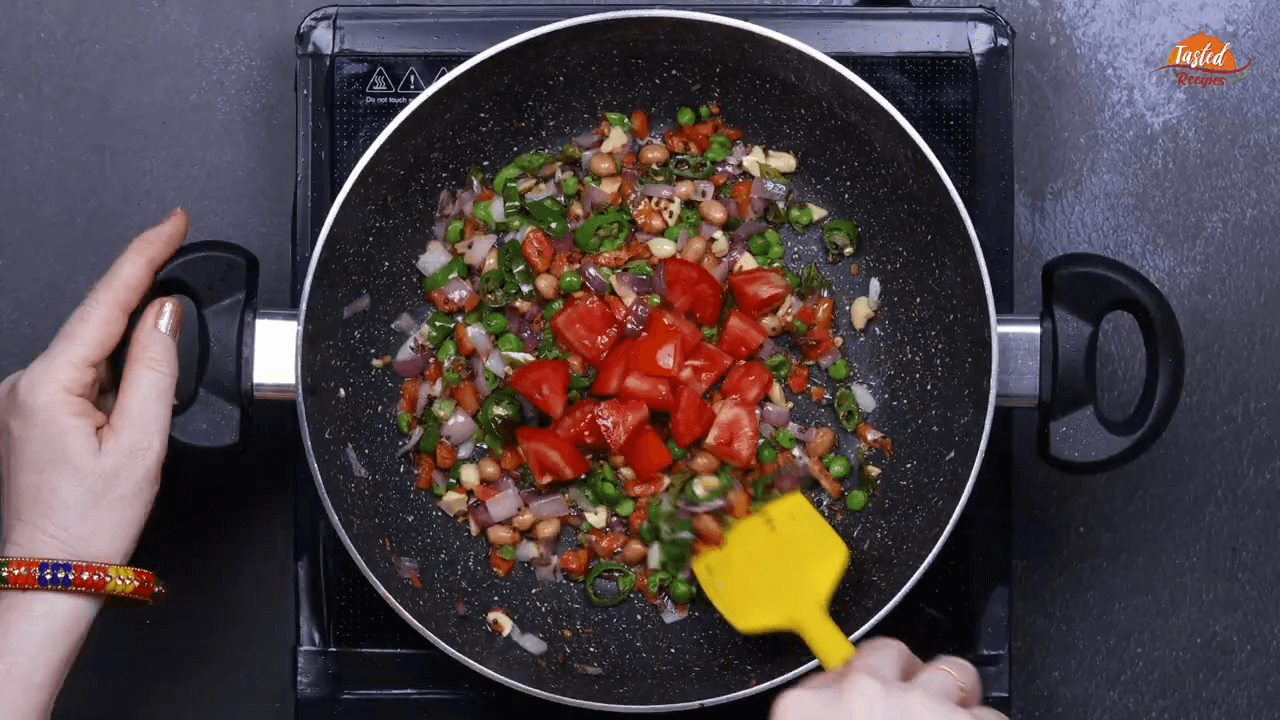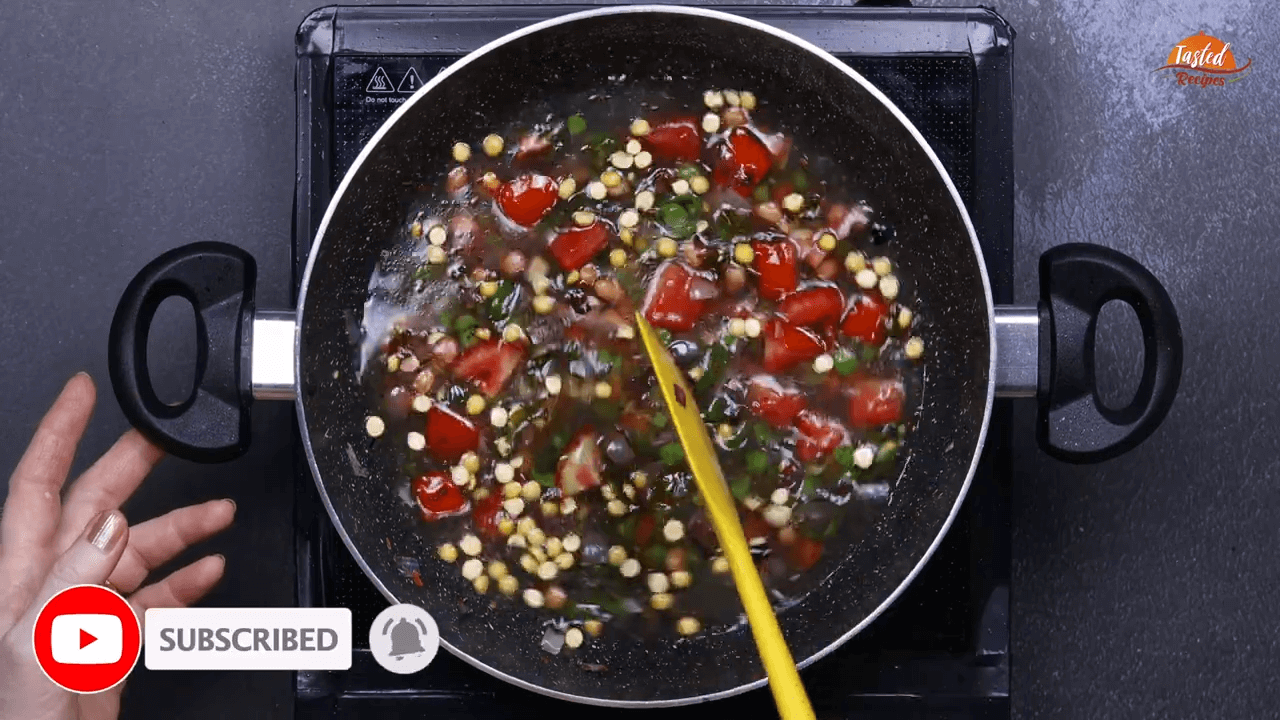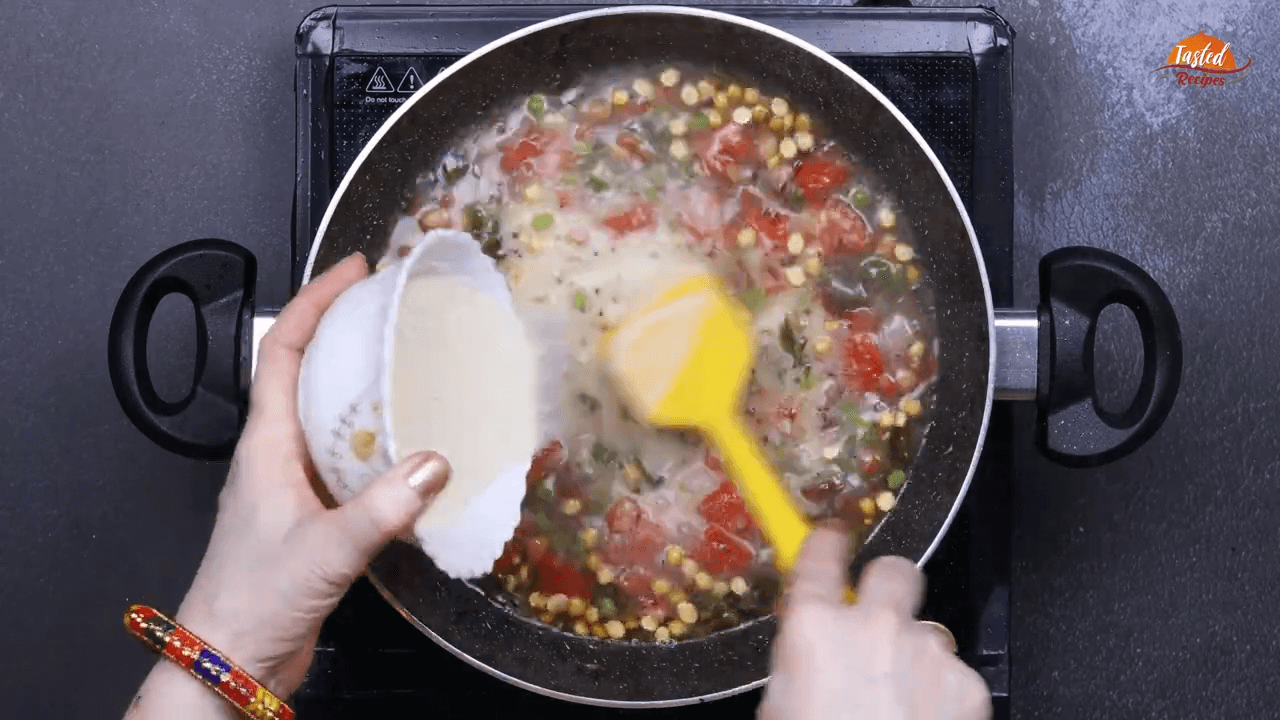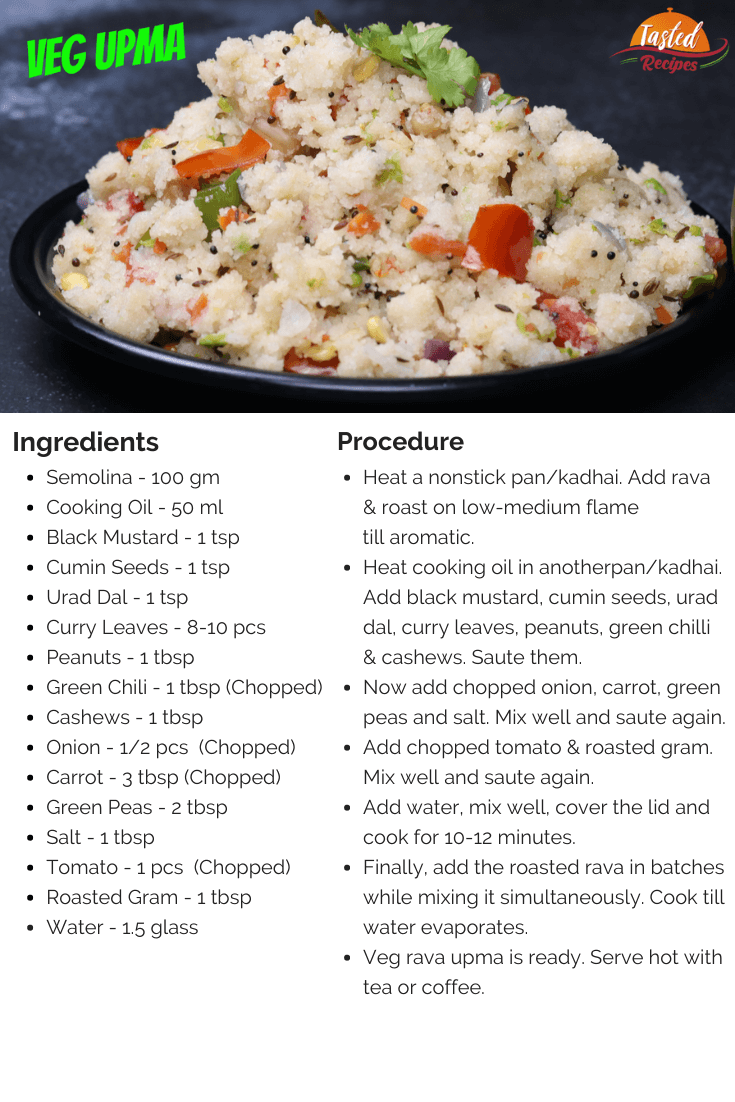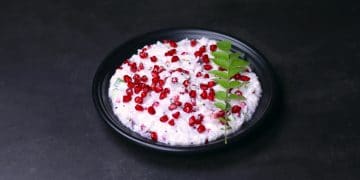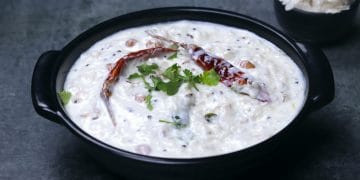Veg upma recipe is my family’s favourite morning breakfast. However, it was not the same as earlier. My daughter-in-law (DIL) cooks one of the tastiest upma in our home.
I say “one of the tastiest” because two more chefs in my family make upma. Oh no, not my husband. He never cooks – only eats. But, of course, I am talking about my elder son and myself.
So we have a total of 3 home chefs with three different styles of making upma. The veg upma recipe I have shared here today is adapted from my daughter-in-law’s cookbook. So let’s see what we have in store for you.
Upma – A Healthy Start to a Day!
Upma is a traditional south Indian recipe made using Rava aka semolina aka suji. Depending on your eating habits, the upma can be straightforward, Kesari upma or a vegetable upma.
It’s always an easy job no matter what kind of upma you choose to make. Furthermore, upma recipes are still comfortable and tummy filler. It’s a quick and healthy way to start your day.
Making veg upma involves roasting rava in ghee, tempering veggies with herbs and spices, and gradually adding roasted rava till finally cooked. Anything more or less beyond these steps is simply a customised style to make upma.
Let’s see how to make veg upma and what ingredients you need.
What all can we add to Upma?
Plain upma contains necessary ingredients, but veg upma has a different edge. Adding a few vegetables is always a better idea to enrich the upma. Our veg upma has it all. Let’s see what we need to cook a delicious breakfast.
Rava (Semolina)
Semolina has different names. We call it suji or rava. It’s granulated wheat or says cream of wheat. Rava being the star ingredient, roasting it is an important step that you shouldn’t be missing. Remember that you need not turn white semolina into brown-red. Keep stirring it on a low-medium flame. Make sure it doesn’t burn at the bottom. When you smell a pleasant toasted aroma, it’s time to put off the flame.
Vegetables
I have used onion, carrot, green peas and tomatoes here. Onion & tomatoes are for a spicy and tangy taste. In comparison, carrot and green peas are an add-on to the whole recipe. Being seasonal veggies, if carrot & green peas aren’t available, you can toss bell peppers too.
Spice & Lentils
Traditional spices used in the household kitchens for tempering are present in the list. There’s an addition – Urad Dal which I am using for tempering to give a nutty flavour. That’s the typical south Indian style of tempering using lentils. Even chana dal is used with urad dal while making tadka, but I have used peanuts and cashews instead of chana dal. Go on and try to experience the nutty taste.
Cashews
You can skip cashews but adding them won’t interrupt the taste. Instead, you can add red raisins as an alternative to cashews. Almonds and other dry fruits are not permitted because we aren’t making halwa.🤣
Green Chili
I use green chilli either as a paste or in chopped form. My elder son likes it that way. Above all, green chilis don’t spoil the texture of the recipes. Instead, the green chilli in white rava elevates the beauty of the upma. The food that looks good tastes better.
Tips to make soft & smooth vegetable upma
- Roasting rava evenly is essential but not turning it to colour red or brown.
- Low or medium-low heat is sufficient to roast the rava.
- Do not add oil, ghee or butter to roast rava. Instead, keep stirring to prevent burning.
- Add rava in batches and keep stirring while adding it.
- We can use either Cooking oil, ghee or even butter to temper the upma.
- Be cautious about the quantity of water. Too much or too less water will ruin the recipe.
- The ideal composition uses 2 to 3 glasses of water (400-500ml) for 1 cup (120gm) of rava.
Storage & Carrying it Out
Storage is not a problem for me when I make this super delicious breakfast. The reason is there’s no leftover. So even though upma is a tasty nashta still, you will have some of it left behind.
If that’s the case, I would recommend storing veg upma in an airtight glass container. I prefer glass containers over plastic ones. Then, toss it into the refrigerator and reheat it when you want to eat it again.
Bring down the refrigerated veg upma to room temperature first before heating it. Then, sprinkle some water and mix the leftover veg upma in a nonstick pan or kadhai when heating.
Packing the upma in kids’ school tiffin or office lunch boxes requires less special attention and care. Because it will be consumed quickly, use containers that keep the food fresh and warm when carried out at the office or school.
